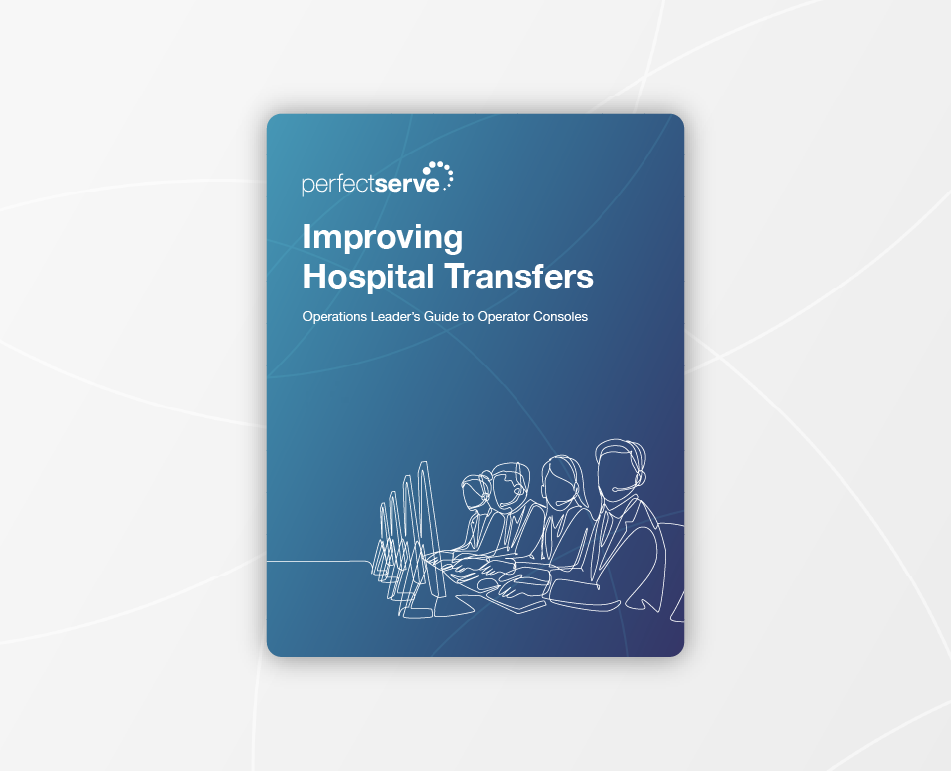Improve Healthcare Operations With Clinical Workforce Analytics
TABLE OF CONTENTS
“Although caregivers are burdened with reporting reams of information, they rarely consistently track the health outcomes that matter most to patients and thus to themselves as clinicians.”1
With rising labor costs,2 growing expenses, falling EBITDA, and decreasing operating margins,3 healthcare organizations need new strategies for controlling costs and improving clinical communication workflows. While analytics are often used to inform strategic decision making such as supply chain management, healthcare organizations may miss the opportunity to use analytics to maximize their most important resource: their clinical workforce.
Let’s explore how an advanced provider scheduling solution can deliver analytics that plays an essential role in improving healthcare operations.
Four Ways Workforce Analytics Improve Operations
- Reduce waste by adjusting staff levels to meet trends in patient demand and value-based care.
- Ensure patient access and minimize leakage by maximizing clinical communications capacity across locations.
- Improve provider retention and reduce physician and nurse burnout by increasing work-life balance and schedule autonomy.
- Optimize clinical staffing models to enhance productivity.
1. Reduce Wasted Resources
Advanced scheduling analytics allow your organization to identify trends in patient demand. Assess service utilization across departments and clinic locations to adjust staffing levels over time. You can analyze demand for specific services, determine the number of clinicians needed to deliver those services for a given timeframe, and reduce staff and labor costs when patient demand is lower. For example:
The Chief of Surgery wants to better understand seasonal trends in patient demand for elective surgeries. He runs a report and finds that case numbers are much lower during January and February. With granular insights into provider supply and patient demand, he is able to project exactly how many surgeons are needed during each shift. He asks the department scheduler to reduce staffing levels for January and February.
2. Ensure Patient Access
After using analytics to identify trends in patient demand, you can respond to rising demand by proactively increasing staff levels to improve patient access and increase revenue. For example:
The Emergency Department’s Medical Director runs a report and finds that during the summer months, the need for pediatric emergency care greatly increases. Currently, the team only staffs a single pediatric emergency physician. The Medical Director contacts the department scheduler and requests for a pediatric advanced practice provider to be added to the schedule for June through August.
In the example above, the ED (Emergency Department) has both increased patient access to pediatric emergency care and increased clinical capacity—helping the department generate more revenue based on a particularly common type of service for the specific timeframe. With trends in value-based care, this pediatric practice can improve patient satisfaction.
3. Improve Provider Retention
A key approach to cost reduction is to improve provider retention. Replacing a single physician can cost anywhere from $500,000 up to $1 million, according to the American Medical Association (AMA).4 This means focusing on provider satisfaction and retention could save your organization hundreds of thousands of dollars.
According to the 2020 Medscape National Physician Burnout & Suicide Report, spending too many hours at work is a key contributor to provider burnout.5 But what is the definition of “too many hours” and how can you help prevent provider schedules from reaching the threshold?
Scheduling analytics help ensure certain shifts, like weekends and calls, are evenly distributed across a team of providers. You can share reports with your team that show even shift distribution. This eliminates any possible suspicion of unfairness, which may not completely eliminate the issue of spending too many hours at work, but it helps address a source of provider dissatisfaction.
4. Optimize Staffing Models
Not all providers and care team members are alike. Some prefer to work more than others, some practice part-time, and they each vary in their preferences and productivity levels, making it challenging to optimize staffing models by specialization and availability alone. Advanced medical analytics reporting provides the details needed to enhance your organization’s staffing models for productivity.
Over time, you can note which providers are more productive during specific shift times to create rules that schedule individual providers for their most productive shifts. You can then review the larger impact of certain staffing models on productivity and adjust your scheduling rules on a macro level. Without scheduling analytics, this type of insight and optimization is nearly impossible. With the evolving demands and expectations in healthcare, it is also essential.
Reduce Poor Workflows and Improve Patient Response Times
Interested in improving operations, reducing labor costs, and increasing patient and provider satisfaction with better clinical scheduling?
Learn more about the clinical workforce analytics available in our Optimized Provider Scheduling solution and how they can enhance your organization’s operations.
Resources:
- Tiesberg T, Wallace S, O’Hara S. Defining and Implementing Value-Based Health Care: A Strategic Framework. Academic Med. 2020 May; 95(5):682-685. doi:10.1097/ACM.0000000000003122
- Labor Management Trends, Healthcare Financial Management Association, Navigant, Aug. 2018: guidehouse.com/-/media/www/site/insights/healthcare/2018/navigant-hfma-2018-labor-pulse-survey.pdf
- Hospital profitability withers in November as volumes, revenues lag, Becker’s Healthcare, Morgan Haefner, Becker’s Healthcare Review, Jan. 2, 2020: beckershospitalreview.com/finance/hospital-profitability-withers-in-november-as-volume-revenues-lag.html
- At Stanford, physician burnout costs at least $7.75 million a year, American Medical Association, Sara Berg, American Medical Association, Nov. 17, 2017: ama-assn.org/practice-management/physician-health/stanfordphysician-burnout-costs-least-775-million-year
- Medscape National Physician Burnout & Suicide Report 2020: The Generational Divide, Medscape, January 15, 2020: medscape.com/slideshow/2020-lifestyle-burnout-6012460 – 5




